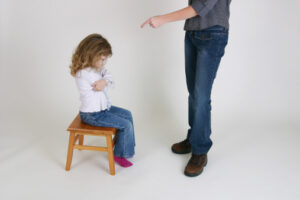- Belgium comes to Yamashita Park
- Residential Villa in Phuket Entices Remote Workers With Long-Stay Rates
- Rare pieces of French glass art at the Mirai Museum of Art
- Feast on fresh fish and seafood at the 2024 ‘Sakana’ Festival
- Would you like to ride in a Louis Vuitton gondola lift?
- Naked Snow Aquarium
- Festive lights at Yomiuriland will get you feeling the holiday vibes
Misbehaving one-year-olds aren’t too young for discipline.

Think your child is too young to be disciplined? She’s not.
Because they’re learning new things every minute, toddlers are constantly looking to you for cues as to what’s okay and what’s not. And while your 1-year-old might be too young to fully grasp the concept of right from wrong, it’s not too early for you to begin laying the foundation for discipline techniques.
Just remember: A tot’s developing mind may need to hear things many, many times before it sinks in, which makes disciplining this age group a challenge.
“One-year-olds haven’t mastered self-control, which is why parents often find themselves dealing with the same behavioral and disciplinary issues over and over again,” says Cheryl Erwin, co-author of Positive Discipline: The First Three Years of Life.
“The goal of any disciplinary action for kids this age is to help them become better at controlling their behaviors. It’s not about punishment; it’s about teaching and providing guidance.”
Read on as experts share the best methods for correcting common toddler transgressions.
The offense: Your toddler dumps her food on the floor.
The best defense: be consistent.
If your child starts flinging food at every meal, she’s probably bored. Toddlers have very short attention spans and will last five minutes – tops – at the dinner table. Aside from preempting the behavior by keeping meals short, it’s key that you be consistent in your response every time the behavior occurs. End the meal and explain why your child must leave the table: “Food is for eating, not throwing.” Next, find a more productive outlet for your child’s energy: “Let’s build a block tower together.” Remember, a toddler needs constant reinforcement to learn to adjust her behavior.
The offense: Your 18-month-old grabs the dog’s fur or tugs at his ears.
The best defense: Correct her.
Help develop your child’s capacity for empathy by explaining in simple terms why his behavior isn’t okay: “Ow! That hurt Rex. Now he’s sad.” Kids this age don’t always recognize when they’re being overly aggressive or rough, but you can prevent such behavior in the future by showing your child a better way to act. Say, “Let’s use two fingers and pet him softly with an open hand. Can you try that?” Toddlers are just starting to learn to control their impulses.
Until they fully understand that their actions can hurt others, it’s up to parents to model and teach them more appropriate behaviors,” says Marcy Safyer, director of the Institute for Parenting at Adelphi University, in Garden City, New York.
The offense: Your daughter doesn’t like the blue shirt you’ve chosen. Or the red one. Or the yellow one so instead of getting dressed, she throws a fit.
The best defense: Think proactively.
Tantrums are a way of life for toddlers because they’re not yet able to control their emotions and manage their anger. While you can’t stop them altogether, you can lessen your child’s chances of melting down by enlisting her help. Make it her “job” to pick out her clothes by laying out two outfits and asking her to choose. If, despite your best efforts, your child still loses it (over this incident or a more public one like when you won’t get her a cookie at the store), let her emotions run the course and wait it out. “Giving in teaches her to try the tantrum tactic again the next time she wants something and you say no. Consistency and follow-through are vital when disciplining little ones,” Safyer says
The offense: Your 16-month-old hits you when you tell him it’s time to leave the park.
The best defense: Enforce family rules.
Youngsters have a difficult time transitioning from one activity to another, particularly if it’s a fun one like playing at the park. Still, your child needs to know that it’s never okay to hit. Since toddlers haven’t yet learned to express their emotions verbally (“I’m mad because we’re leaving”), they often get physical (and hit, or kick, or bite) instead. Up your child’s emotional quotient by labeling how you both feel: “You’re mad. Mommy’s sad because that hurt.” Finally, reinforce your family’s rules: “It’s not okay to hit.” Next time, consider your child’s emotional needs and prepare him better for the transition by giving advanced warning: “Three more times on the slide and then we have to go.”
DICIPLINE DOS AND DON’TS
DON’T:
– Hit. This teaches your child that it’s okay to use force. Plus, his mind isn’t developed enough to make a connection between his misdeed and your response.
Yell. It startles your child and might make him cry.
– Overuse the word “no.” Toddlers who hear this term a lot start to tune it out. Focus on what he can do instead: “Let’s jump on the floor, not the couch.” Cave when she cries. It sets a precedent for future crying jags.
DO
– Catch him being good. Reinforce good behavior by giving hugs or praising good listening skills.
– Make eye contact. It conveys respect and commands his attention.
– Keep him safe from harm. Make trouble less tempting by childproofing his surroundings.
– Say “I love you” after enforcing a consequence. She’ll grow to understand that you’re setting limits out of love.
UH OH, HERE COMES TROUBLE
If it seems like your toddler is constantly up to no good, keep in mind that the world looks different from his viewpoint. In fact, there’s probably more behind his behavior than what meets your eye.
What you see: A meltdown in aisle 8.
What your toddler thinks: I’ve had enough. I’m tired (or hungry or bored) and this shopping trip is never-ending.
What you see: A tiny hand tugging on the cat’s tail.
What your toddler thinks: I’m curious about this creature. I wonder what will happen if I pull on this thing?
What you see: Little legs heading for the stairway. Again.
What your toddler thinks: I’m going to explore where these will take me.
What you see: Bite marks on your older child’s arms.
What your toddler thinks: I want that toy!
What you see: Fast feet dashing away from you.
What your toddler thinks: This game of chase is fun. Can Mom catch me?
















